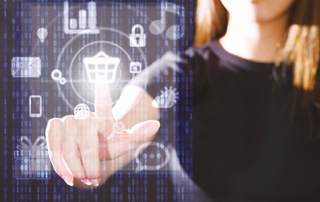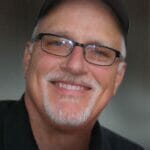
There is no doubt that nursing homes’ overarching mission is to provide the highest quality care for their residents. And they couldn’t do any of it without the money needed to keep their doors open.
So it’s no wonder so much of the “news” these days concerns electronic health records and reimbursement. Huge information technology cottage industries have sprouted to serve both of these vital functions.
Still, the business of long-term care is so much more than health records and filing claims. In fact, keeping the physical plant healthy is as important as maintaining that of the residents within. The IT world now offers a wealth of software solutions to manage everything from locks, lights and laundry to furnaces, fans and foodservice. While some of those solutions are just beginning to realize their potential, others are evolving beyond the wildest expectations.
Secrets behind demand
Although some of these IT solutions don’t fit neatly into little boxes, the major areas they serve are around data storage and internet service; facility maintenance; staff scheduling; resident security; dietary; and asset protection.
A number of key trends concerning healthcare IT have emerged, and the long-term care industry is no exception. Here’s a breakdown:
Integration: Developers learned early on the importance of building software solutions that didn’t “ignore” the larger healthcare environment. For example, facility maintenance software can include functions outside of the typical equipment inspection and maintenance reminders, inventory, equipment life cycling and depreciation to functions like asset management.
“The healthcare software industry is rapidly evolving. It’s moving from fragmented point or departmental data solutions, like facility management answers — that have focused but limited analytics capabilities — to fully integrated solutions that empower administrators to continually measure and manage enterprise performance,” observes Rick Marciniak, chief marketing officer of Stratus Interoperable.
Resident security solutions, which often include managing locks, alarms, video surveillance and elopement warnings, now include emergency preparedness and response features.
Interoperability: The concept may have been borne out of EHR systems development, but it’s now become an IT-wide necessity. For example, many dietary and food- ordering systems need to work in tandem with EHR systems so residents receive the best nutrition based on their health condition.
Automation, decision support and artificial intelligence: When it makes sense, passive features remove the human error component; some of the more sophisticated maintenance software employs predictive analytics.
As common as maintenance software has become, it is vastly underutilized, according to Dan Roberge, president of Maintenance Care.
“The principal method for managing work orders often still uses logbooks or carbon copy pads at the nurses’ station that get filled out when a maintenance request needs to be initiated,” he says. This cumbersome process requires maintenance staff to make multiple daily rounds collecting the requests.
On the other hand, new maintenance software solutions automate many tasks, and using mobile tech vastly increases productivity while preventing larger maintenance issues down the road, he explains. Many issues are now easily flagged via mobile or PC keyboards by caregivers and residents.
Mobile and remote access: Many, if not most ,of the IT applications today allow users to manage important functions via mobile phone. It’s nearly ubiquitous.
Bud Meadows, chief revenue officer at ABILITY, believes personal use technology and platforms will continue to grow in importance for long-term care.
“People don’t want to leave technology at the door just because they’re interacting with a care facility,” Meadows says. “If staff members are managing their personal calendars on their phones, they’ll want to be able to access and manage their work schedules there too. Similarly, patients and their advocates who pay other bills online want to be able to pay their long-term care bills in the same way.”
Universal access via mobile tech is the key reason for the rapid success of resident concierge and staff scheduling systems, says Majd Alwan, Ph.D., senior vice president of technology for LeadingAge, and executive director of the Center for Aging Services Technologies (CAST).
“This smarter class of scheduling software systems optimize the schedule, not only based on the needs of the provider, but also the preferences of the individual staff member or contract ll-in, which improves retention and reduces turnover,” he says.
Mobile tech such as asset tagging has been a boon for facility managers, says Sue Lieven, product manager for Direct Supply TELS, a building management platform designed for senior living. The rise of so-called “smart” equipment now empowers staff. “With a real-time x-or-replace knowledge, facilities can maximize equipment life and save on repairs in the short and long term,” she adds.
Even the allure of mobile has evolved into a higher purpose, observes Josh Malbogat, senior director for TheWorxHub by Dude Solutions. “Now technology is beginning to focus on business intelligence and analytics, that is, using the data collected to change the way we deliver services to both improve profitability and resident satisfaction,” he says. “Great technology is taking this even further by creating industry-wide benchmarking — collecting data, anonymizing it and delivering it back to operators to inform their operations and decision making.”
All of these software solutions are constantly mining information, many of them uploading it to cloud-based applications and allowing real-time access.
It’s this last feature that has so many software developers excited. “The past was about EHR. Now that the EHR gold rush is over, the present is about data, data, data,” says Ken Bell, vice president of marketing for SimpleLTC. “The organizations succeeding now are the ones that leverage all that data to uncover the hidden intelligence buried inside it.”
Bell believes successful organizations are preparing now for data exchange and interoperability. The flow of health information across partner networks will be a key driving force in managing resident care in the future, he says.
Enterprise data warehousing and advanced analytics technologies are relatively new to healthcare and are just beginning to be used in LTPAC facilities, adds Marciniak.
The ‘all-in-one’ debate
Software engineers have crafted amazing systems that seem to “do it all,” or almost all. It doesn’t require much of a stretch to see the value of focused, fully integrated operational software solutions that seem logically related.
For example, one universal software solution can improve efficiencies and communication to ancillary departments, as Amy Wooton, director of nutrition management for MatrixCare, argues.
“Nursing software that can seamlessly send messages to the kitchen regarding diet orders, food allergies and even weight measurements can save time and improve care,” she says. “A diet order entered only one time in the medical record, representing the only diet order in the facility for that resident, omits the double entry errors.”
But the healthcare world can be a complicated one.
“Generic, one-size-fits-all technology to optimize different functions in long-term care will not work,” says Meadows.
“Companies are getting more sophisticated in the type and quantity of information they want to gather, and often look for a solution that ‘can do it all,’” observes Roberge. “Although those ‘all-in-one’ solutions do exist, many would argue that finding software solutions that are specific to a particular purpose like maintenance management, and have them talk to each other after the fact, is more efficient.”
Adds CAST’s Alwan: “All-in- ones address an age-old pain point for providers, and that is integration, interfacing and sharing data with other systems.”
The next frontiers
IT innovations are largely fueled by need. Some LTC applications, such as facility maintenance, have benefitted from remarkable innovations in other industries.
Some see dietary services, housekeeping and laundry as areas ripe for IT innovation.
“While there have been many advancements in menu planning and food procurement, tremendous opportunity still exists to connect all of the elements of foodservice to create a truly personal approach that re ects medi- cal needs, allergies, preferences, nutritional needs, and even food availability and price for everyone every day,” notes Chuck Fastner, senior director of engineering for Direct Supply TELS.
Jeremy Spradlin, CEO of Care-Serv, says laundry, security and dietary services join housekeeping as the next IT frontier because, even today, “most facilities’ direct care staff don’t have the technology they need or enough of it.”
Borrowing from facility maintenance practices, for example, laundry services can benefit greatly from asset management tools like F-tags to track linen lifespans and inventory, and technology management holds great promise for both lowering costs and improving resident satisfaction, he adds.
From the April 01, 2018 Issue of McKnight's Long-Term Care News





